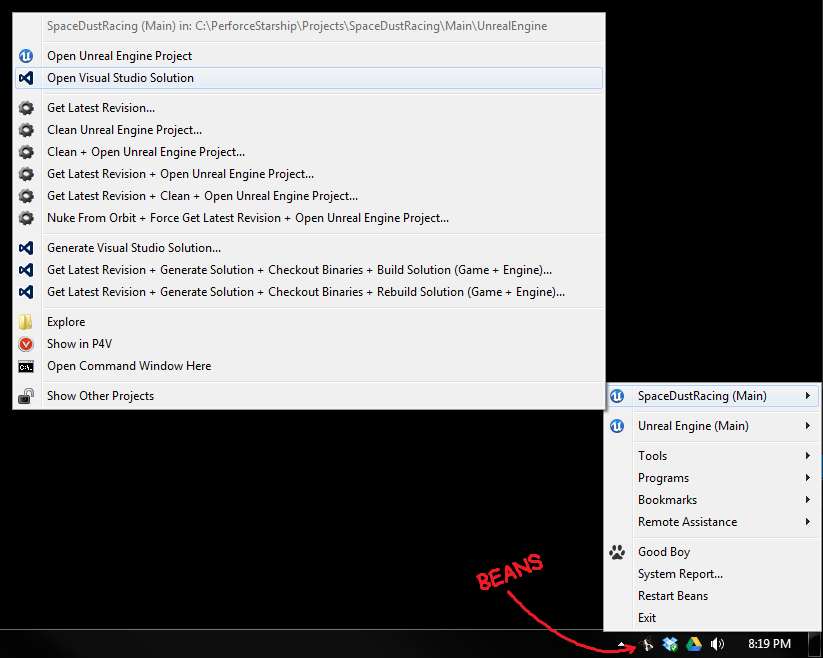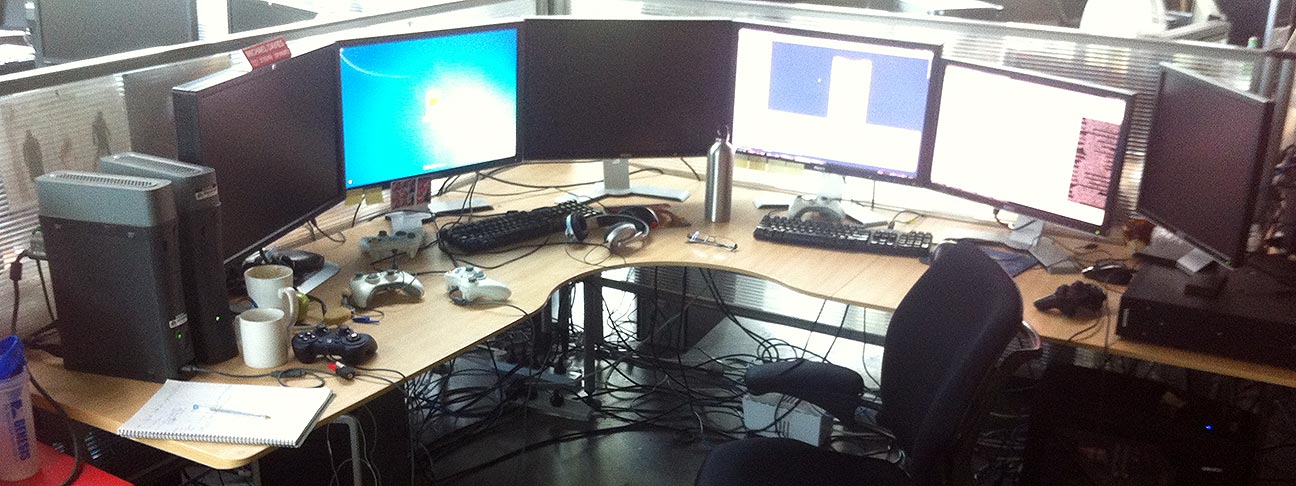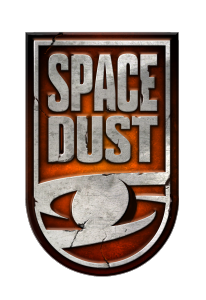Ahh, the corporate video game lifestyle. quad 24″ monitors, $1000 office chairs, free snacks, and beer o’clock. But when you and four colleagues throw that lifestyle away to pursue your indie game dev dreams, more often than not you can’t (and shouldn’t) rent a fancy office, because in case you weren’t paying attention, you’re now peasants and every cent counts. But with the right tools and processes, you can work together remotely on a tight budget.
In this three-part article, I’ll run through the tools and processes we use for remote game development at Space Dust Studios. Part 1 focuses on communication, Part 2 focuses on collaboration, and Part 3 focuses on security and backups. We’ve evolved this setup over the last 12 months and it’s working well for us, though we’re a team of five living in the same city, so your mileage may vary. If you’re working with a bigger team or are spread across different time zones, you may need to make some changes.
We’re always on the lookout for improvements, so please leave a comment if you’ve got suggestions!
Part 3. Security and Backups
By working remotely you’re pushing a lot of sensitive information into the cloud. It’s worth thinking carefully about security for every service you’re using, particularly if your company is going to be entering the public eye, which will also attract the attention of hackers (even if they are just 15 year olds).
Private vs public
Make sure with any private service you’re using that the information isn’t publicly available. It’s good practice to try and hack into your stuff from a fresh browser with nothing logged in, and by trying to follow internal email links on outbound emails. If you’re posting internal videos on YouTube, make sure they’re unlisted or privately shared, or better yet, upload your videos to Google Drive instead. You’ll get the same YouTube-style player without the risk of accidentally making it public on your YouTube channel.
2-step verification
Make sure everyone on the team is using 2-step verification where possible. This includes all Google and Apple services, as well as Dropbox. It adds an extra layer of security to your accounts, requiring a password and a code sent to your phone over SMS. You really don’t want someone getting into your company email archive in the cloud!
One potential gotcha with 2-step verification is travelling. If you’re attending an overseas conference or trade show, double-check with your phone company that international roaming is turned on before you head over there.
Virtual private networks (VPN) and SSH tunnels
If you’re too cheap for dedicated hosting (which we are), never expose a service on your local network (such as Perforce or VNC) directly to the web. Instead you can use a VPN to let team members log in securely to your home network, although personally I prefer using SSH as I can directly control which ports and services team members can access.
There are many free SSH servers and clients out there to choose from, although be careful of the licensing terms which may stipulate they’re for personal-use only.
Use an unusual (and high) port number for your SSH connection, instead of the usual 22 or 443, and opt for public key authentication over passwords, to prevent man-in-the-middle attacks.
Password salting
You’re going to be creating a lot of company logins for various online services, so be sure to use different passwords for each one. Prefer long passwords over short ones where possible. A simple solution for an easy-to-recall yet hard-to-hack password is to “salt” a master password: take the original password and add something different for each service, based on an easy-to-remember rule like “the last letter of the service name”. (Make up your own rule though.) Talking about password salting in detail is beyond the scope of this post, but you can read more about it here if you’re a big cryptography nerd: Secure Salted Password Hashing.
Automated backups
Maybe one day you’ll get hacked. Maybe a hard drive will fail. Maybe Google will go belly up and take all your email with them. Maybe an employee will accidentally delete the entire contents of your master server. Whatever the cause, you really need your own on-site company backup solution for disaster recovery.
The easiest backups are the ones that happen automatically. We wrote a cheap-and-nasty Python script (why am I so disparaging towards my Python scripts?) that backs up the contents of our Dropbox, Google Drive, Perforce, Trello, mailboxes, and our websites plus their MySQL databases into DVD-sized password-protected RAR files. Make sure you add a RAR data recovery record so the archive can handle some data corruption, and copy the files onto multiple physical media (ideally of different types) as part of the automated backup process.
They’re not cheap, but you can get external RAID hard drive enclosures to protect against hard drive failure. We use my personal WD MyBook Studio II, which has 2TB storage mirrored in RAID-1 across two x 2TB drives.
Off-site backups
We also create manual off-site backups to protect against fire and theft by copying the RAR files onto a USB key, then stashing that in a waterproof bag in my garden shed. It all sounds very cloak and dagger, and it is, so just roll with it and pretend to be James Bond while your partner watches on, shaking her head pitifully. Another option would be auto-uploading the RAR files to an FTP server, but our total backup size is already at 20GB, and my broadband upload speeds aren’t that great, so that’s out for us.
Restoring
It’s great to have backups, but have you actually tried restoring your data from them? It’s worth taking the extra time to do this, even if you just restore to a different location for testing purposes. Otherwise the backups are useless, and you may as well have done nothing. Iron out the glitches at the very beginning, not when you’re up the proverbial creek with the next milestone due in 24 hours.
Everything outlined above is working well for us now, but as we ramp up our team and projects we’ll most certainly need to get office space. But for that awkward period between starting your company and bringing home the bacon, hopefully the tools and processes I’ve covered here will help get your team and project moving along for very little financial investment.
Have we missed something? Please let us know in the comments and we’ll add it to the post!






